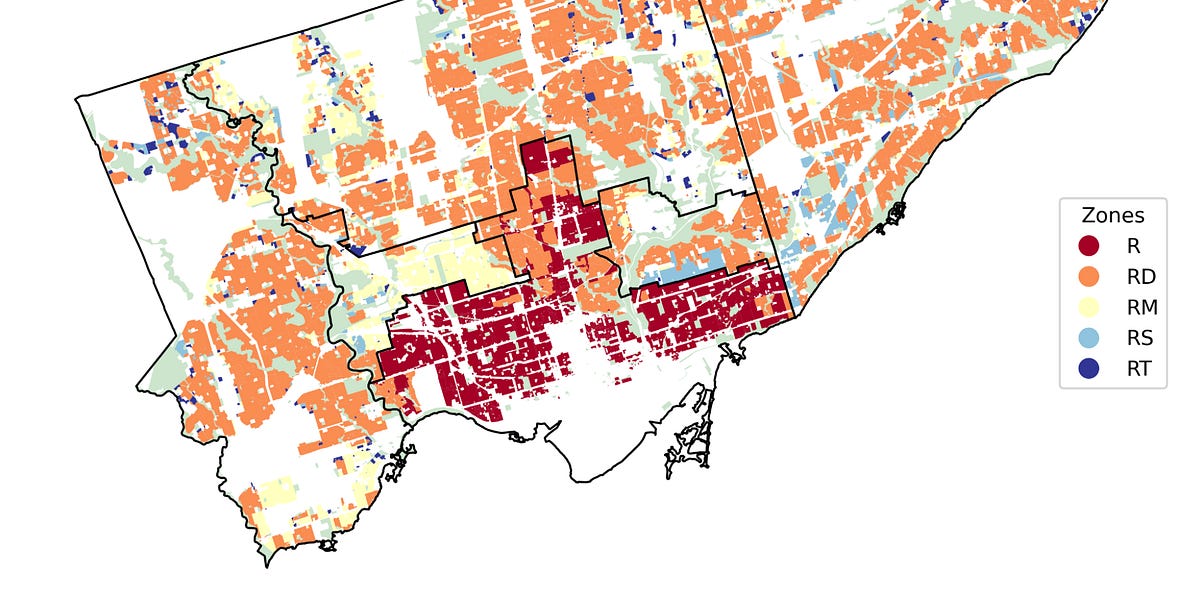Northern Light
Superstar
Guest contribution within City Hall Watcher (highly recommended; worth the subscription!) on where the EHON work falls short:

Beyond EHON — what's next for Toronto housing policy, and ending exclusionary zoning
City Hall Watcher #283: Guest Damien Moule on what's left on the housing reform to-do list at Toronto City Halltoronto.cityhallwatcher.com
“ Combined, the various EHON projects have produced the largest conceptual change¹² to Toronto’s housing policy in a generation. But EHON didn’t tackle exclusionary requirements related to lot size, coverage, and floor space index for most buildings. Or restrictions on semi-detached houses. So neighbourhoods with the worst zoning will likely be untouched by EHON.
I would describe EHON’s overall impact as smoothing down some of the hard edges of exclusionary zoning, while leaving it mostly intact.”
May I suggest Allen that you make clear that you are quoting from the piece above. You can do this by using screenshots, but otherwise, I might suggest both quotation marks and Italics, as it makes it clearer you're quoting the author vs posting your take.
****
Here's my take on Damien's piece.
1) I think overall he's too harsh on EHON and understates the degree of change.
2) I think he has very valid points on FSI and even more so on lot coverage minimums. (I agree with removing the former on smaller proposals in neighbourhoods and the latter entirely)
3) He focuses a bit on the Bridle Path as the clear worst offender in terms of exclusionary zoning and he's entirely right on that. I have literally advocated in these pages for buying up the Bridle Path, and leveling anything that is designated heritage, and starting over. Even if it were left as an SFH subdivision, it could easily go from ~60 houses to ~360 houses and still be large homes on large lots. That said, It would make immense sense to be to do midrise on portions of Lawrence, and Bayview and potentially Post Road *
* I would really like to carefully consider the options for connecting Lawrence to Lawrence directly. It would be challenging (lots of big bridges) and could potentially adversely impact either York U's Glendon campus or Toronto French School's........still its worth a closer look.
If one did midrise at the edges of the Bridle Path, and some streets with luxury towns and or more conventional SFH etc. One could easily have triple 900 housing units which would be 15x the current number. That wouldn't make a dent in the City's housing crisis, but it would be a tangible gain and one that would make for great optics/symbolism.
5) I want to ask UT's zoning guru....... @innsertnamehere how a multiplex can be legal under EHON but a semi-detached is not. That seems silly, and contradictory.





